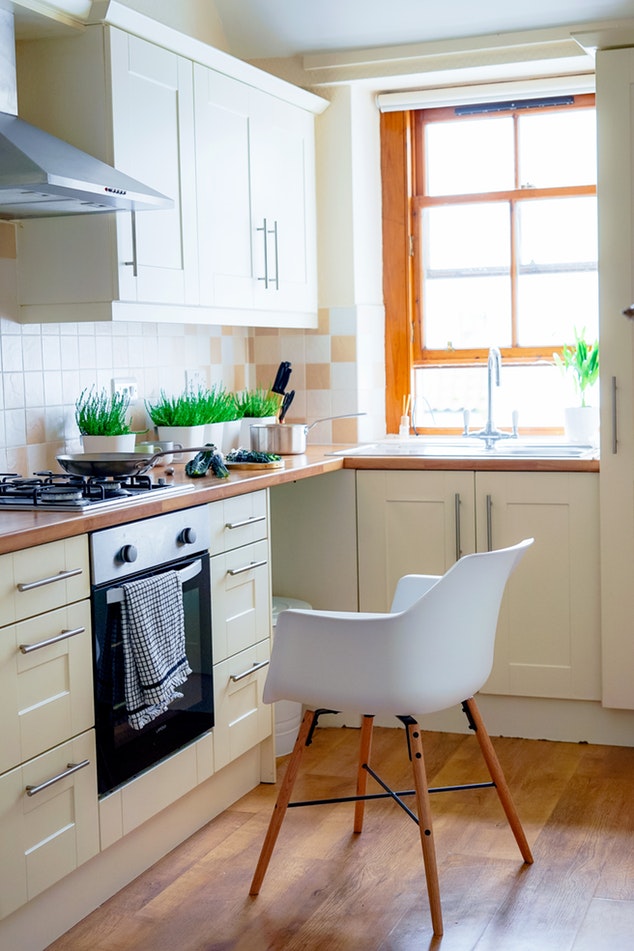 I hope you agree with me that a kitchen sink gets the most use than even the bathroom sink in any house. After everyday usage, a lot of water goes down the sink drain carrying with it food waste, grease, fats, and cooking oil. Because of the rough life that your kitchen sink strives, you need to take a great deal of care and maintenance to this facility.
I hope you agree with me that a kitchen sink gets the most use than even the bathroom sink in any house. After everyday usage, a lot of water goes down the sink drain carrying with it food waste, grease, fats, and cooking oil. Because of the rough life that your kitchen sink strives, you need to take a great deal of care and maintenance to this facility.
First, you need to learn how to clean kitchen sink drain and the tray itself. At times, you might need professional help if you are green in this.
People try to prevent having a dirt kitchen sink drain but this is not possible because oils, fats and other forms of dirt will get flushed down the sink drain. If you don’t regularly clean your kitchen sink drain, it will get clogged and stinky. If this is the case, you can’t entertain having a guest in the kitchen.
In line with this, you need to understand how to clean kitchen sink drain to enable you to avoid the adverse effects. Can you bear with a stinky kitchen sink drain at the time you are preparing your meals?
You really need to understand how to clean kitchen sink drain to avoid having this scenario in your kitchen. After all, this is an important part of home maintenance and cleanliness. To get started, you need to know the tools and materials required for this simple do-it-yourself project.
Tools And Materials Required For The Task
For you to have the work done there are tools and materials that you might require. In reality, the process of learning how to clean kitchen sink drain starts with understanding the tools and materials for this do-it-yourself project. The following is the list of tools and materials required for this DIY project.
- Plunger
- An empty bucket
- Rubber gloves
- Channel locks
- Pipe wrench
- Drain snake
- Auger
Procedure: How To Clean Kitchen Sink Drain
- First, wear the rubber gloves and start with the use of a plunger to clear the drain if possible. At this point, remove the sink strainer.
- Turn on the kitchen sink faucet to allow the flow of water. On the drain that is not connected to the disposer, place in the plunger and start tilting while pressing at the same time.
- To completely clean the sink drain, keep pressing the plunger against the drain opening more than 60 times. Don’t get tired at all! Press with high intensity to get the right results.
- Sometimes, it might be difficult to clear the sink drain using a plunger. If you tried your best and the sink drain is still dirty, you need to change the tactic. You need to work on the P-trap from underneath the sink.
- As you understand, you clean the kitchen sink drain from the top or from the beneath. You start working on top and if this does not give you the result you want, go ahead and work from the underneath the sink. At the end of it all, you just want a clean kitchen sink drain.
- If you decide to head into the next phase, ensure that the kitchen sink is entirely drained. Under your P-trap, place an empty bucket to avoid water spillages on the kitchen floor.
- Using the channels lock, loosen the nuts holding the P-trap and thereafter, hand-unscrew them and remove the P-trap.
- Thoroughly, clean the P-trap to remove the gunk buildup. Make sure you clean the piping section leading to the sink using the drain snake or auger.
- Remove the pipe connection on the kitchen wall to expose the line leading to the sewer. Into this opening, insert the drain snake and fish out the dirt and gunk. Keep inserting and rotating the drain snake in the pipe and fishing out the dirt.
- Avoid pushing the dirt down the drain because the buildup at the farther sections will lead to another blockage. Avoid complicating the situation such that only a professional can resolve the issue. Follow the simple drain cleaning rules and you will be okay.
- Re-install the P-trap and secure the connection using the pipe wrench. Don’t forget to slot in the rubber gasket that you removed when you were removing the P-trap.
- After you have secured the connection, boil some water and pour it down the drain. Let the hot water melt the little fat residues and fight the odor. Dirt in your kitchen sink drain leads to bacteria buildup and consequently a stinky drain.
- Meanwhile, you can test whether the connections were correctly done. Are there any leaks under your kitchen sink? Make sure you tighten the connections to fix even the minimal leaks. But if there are no leaks, you know how to clean kitchen sink drain.
- In the future, ensure that you clean the sink’s drain regularly to avoid getting at the stage of a stinky kitchen.
- After the use, always wash the kitchen sink and pour hot water down the drain. The hot water will help to prevent the cooling down and solidification of fatty residues. You can also pour down the drain a mixture of vinegar and baking soda to avoid a case of a stinky drain.
Conclusion
All in all, I hope this guide has been helpful to you and now you know how to clean kitchen sink drain. Apart from knowing how to clean kitchen sink drain, you need to learn many more other home improvement do-it-yourself projects. You need to understand that you cannot prevent having a dirty kitchen sink drain, but you can always clean the kitchen sink drain to remove the dirt. If you work on this routine maintenance practice more regularly, you won’t have a case of the stinky kitchen sink drain. Also, this will help to prevent a case of a clog and a blockage formation in your kitchen sink which is indeed irritating when water cannot flow down the drain. If you like this post, share it with your friends.
